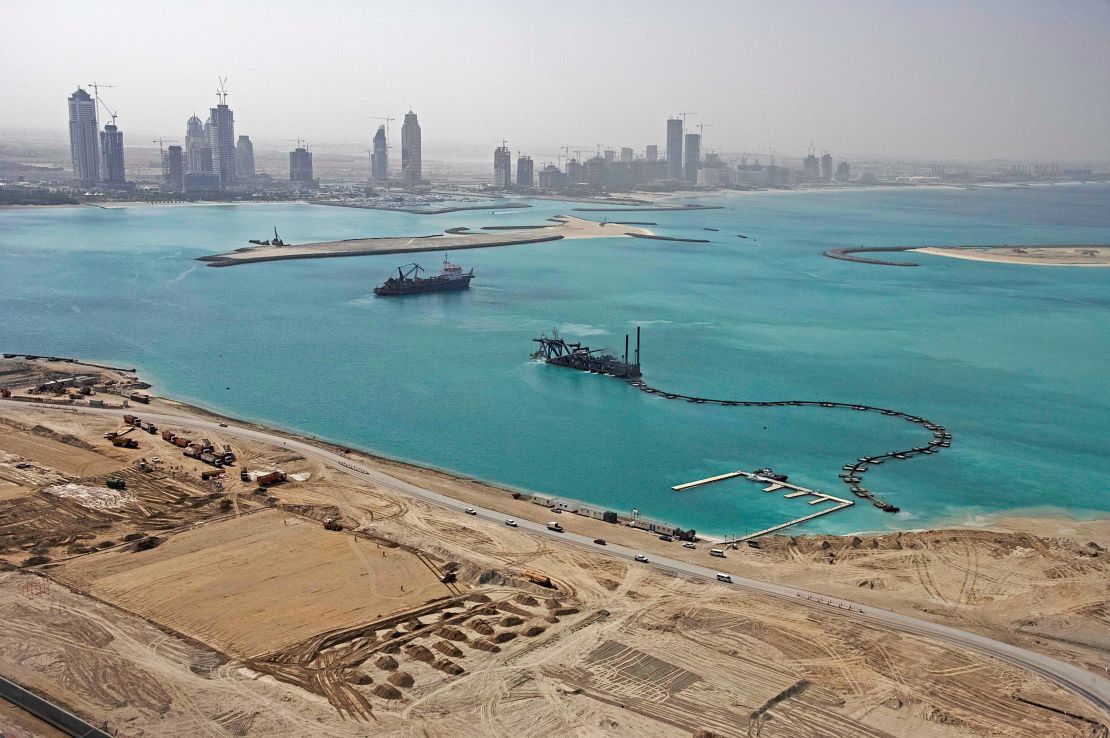From a vantage point more than 50 stories high, Ali Mansour looks down on the islands he helped build nearly two decades ago. “It was a great challenge,” he says. “A (once-in-a) lifetime experience.”
Those islands make up Dubai’s iconic Palm Jumeirah – a man-made, palm tree-shaped archipelago home to luxury hotels, pristine beaches, and nearly 80,000 people.
“It was a first,” recounts Mansour, “an unprecedented project of that scale.”
A civil engineer by trade, Mansour moved from Canada to Dubai in 1998 to work with a consultancy firm. He watched from a distance as the Palm project began in June 2001. “I became very curious when the first satellite pictures were published in 2002, showing a tiny piece of land emerging above the ocean surface,” he says. “Then I decided I’m going to do whatever to join the company behind the work on this project.”
One year later Mansour joined Nakheel, the Palm’s developer. Today, he is advisor, director of projects for Nakheel Marine Engineering.
Building the island
No steel or concrete was used to create the base of the island; instead, the team used only sand and rock. Even though Dubai is surrounded by desert sand, they couldn’t rely on the emirate’s bountiful resource. “Desert sand liquifies once in the water,” Mansour explains.
Roughly 120 million cubic meters of sand had to be dredged and brought over from the bottom of the Persian Gulf 10 nautical miles from the islands. More than 7 million tons of rocks were mined from the UAE’s northern Hajar mountains.

These rocks make up the crescent-shaped, 11-kilometer-long breakwater that protects the island from large waves and high winds. Nakheel says all the rock and sand used to build the island could form a two-meter-high wall that would circle the globe three times.
The 560-hectare (1,380-acre) island is so massive, that Mansour and the team used satellite guided technology to help build the frond-shaped island.
Also a master diver, Mansour visually inspected the breakwater with five of his colleagues, “diving together in parallel and on different levels,” he says. The review took Mansour and his team 10 weeks to complete.
“Although we had the latest software,” he says, “I’m an old-school person … visual inspection remains very essential for me.”
Reaching new heights
For the first 20 years of the Palm’s existence, the only way for visitors to see the entire colossal structure was from a helicopter tour or to jump out of a plane.
Now, visitors can view the Palm from Nakheel’s new 360-degree observation deck – 52 stories high – called the View at the Palm, which opened in April.
Best spots for taking photos in Dubai
“We’ve added layer upon layer upon layer of things to do on the actual Palm, so it’s not just a place to live, but it’s also a great tourist destination,” says Gail Sangster, assets director for Nakheel.
Part of the new Palm Tower slated to open fully later this year, the View at the Palm is the island’s latest attraction, joining others such as the Atlantis resort and Palm West Beach. Last year, Palm Jumeirah also received a Guinness World Record for the largest fountain in the world. “The future of the Palm is just going to keep going and going,” Sangster says.
Even Mansour, who has seen practically every inch of the island up close, can’t help but get butterflies viewing the Palm from up high.
“This 360-(degree) open view with all the landmarks on the mainland and looking at the island in full is really astonishing,” he says.



































